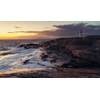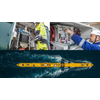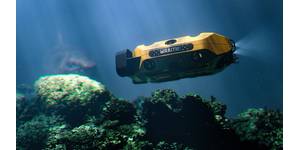New NOAA Chart Adds to Arctic Shipping Safety
Kotzebue Sound (off the coast of Alaska) chart replaces measurements last taken in 19th century offers safer passage on a route seeing more vessel traffic
NOAA formally presented today to Alaska officials a new nautical chart for Kotzebue Sound in the Alaskan Arctic, a sparsely charted region that is seeing increased vessel traffic because of the significant loss of summer sea ice.
The new chart depicts the full range of depth measurements and object detection acquired during a full ocean bottom survey last summer by the NOAA hydrographic survey ship Fairweather. It replaces a chart showing depth measurements last taken in the 19th century spaced three to five miles apart, leaving room for possible undetected dangers in between.
The new navigational chart addresses a pressing need for this Northwest Alaska transportation hub, located in the Arctic Circle. Barge shipments and large transport ships must be anchored at least 14 miles out in the Kotzebue Sound due to shallow waters and inadequate charts and navigational aids. Freight must then be transferred by smaller barges to Kotzebue.
The new chart, number 16161, depicts measured ocean depths at a scale of 1:50,000. An inset for Kotzebue Harbor will have even more detail, with a scale of 1:25,000. Mariners had been using a chart with a 1:700,000 scale, mostly depicting water depths measured in the 1800s, before technology was able to acquire data with today's level of precision and accuracy, and before today’s increased shipping necessitated updating of these navigational surveys.
“This new chart is just one of the many critical navigational services that NOAA provides to support safe navigation and maritime commerce while protecting important marine resources,” said Kathryn D. Sullivan, Ph.D., deputy NOAA administrator and assistant secretary of commerce for environmental observation and prediction. “Based on stakeholder discussions and developing Arctic vessel traffic patterns, NOAA will improve the existing charts and navigational data to position the regional maritime economy to meet emerging opportunities, as we expand our commerce and energy sectors into the Arctic region.”
The charts was made available to the public on May 11, as an online Print on Demand chart through OceanGrafix.











 August 2025
August 2025



